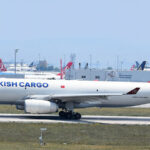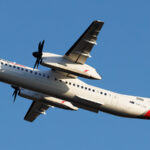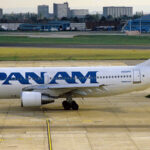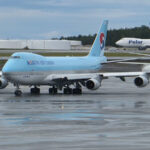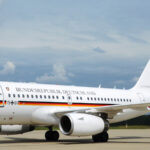Pan American World Airways, commonly known as PanAm, left an indelible mark throughout the 20th century. Founded in 1927, this iconic U.S. airline rose to become a symbol of elegance and technological prowess. However, despite its status as a world leader in the aviation industry, PanAm’s history is marked by moments of greatness and, ultimately, its abrupt decline.
The birth of PanAm
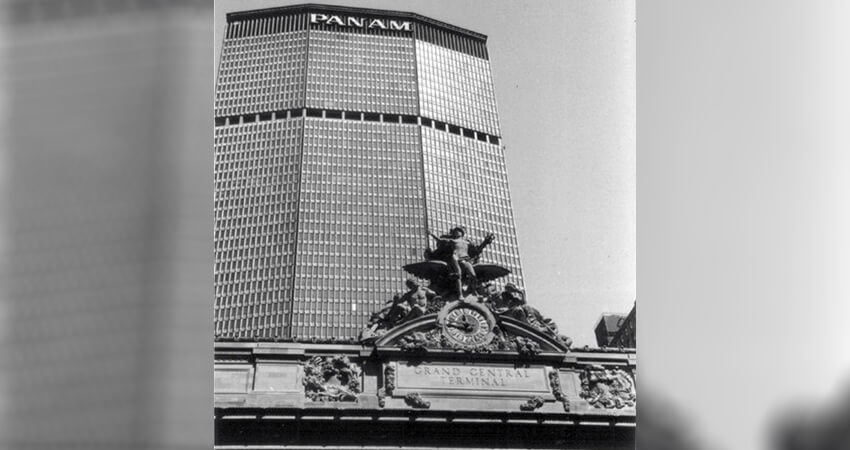
Pan American Airways was founded by Juan Terry Trippe, an entrepreneur who anticipated the global potential of air travel. From its earliest days, PanAm set industry standards, introducing innovations such as transoceanic flights, luxury services, and a fleet of state-of-the-art aircraft.
The history of PanAm began closely linked to international flights. Its name is linked to the fact that it was in charge of postal service by air throughout the Americas, connecting Latin America with the United States.
But the airline’s name is linked to innovation. Precisely, one of the most notable innovations was the transoceanic service linking New York with Europe without stopovers, in 1958. A milestone in commercial aviation that revolutionized the airline market. This breakthrough marked the beginning of an era in which PanAm would stand out as a pioneer in the opening of increasingly long-haul international routes.
During World War II, PanAm played a crucial role in military transport and contributed to the U.S. war effort. From an economic point of view, this also enabled it to win lucrative government contracts.
After the war, the airline expanded its operations. One of the most notable changes is that it incorporated jets, beginning a new era for airlines. While still retaining turboprops, this allowed PanAm to reach greater distances with greater efficiency and comfort.
PanAm and Boeing
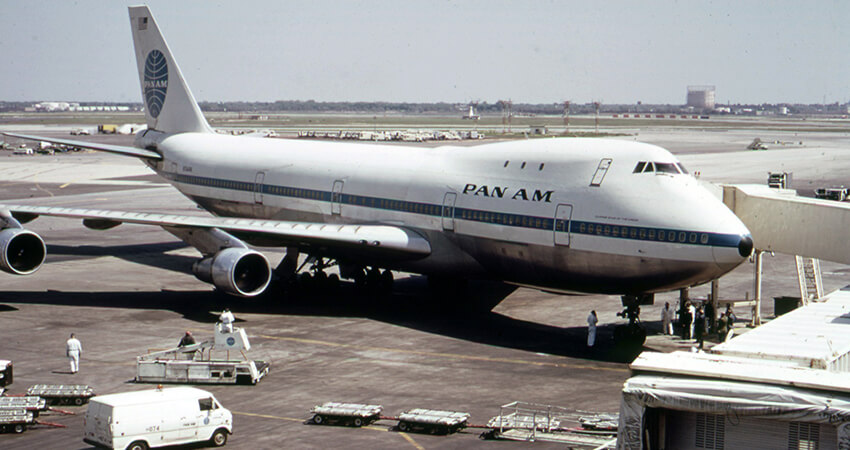
Incorporating more modern aircraft came hand in hand with the strong relationship Pan American Airways forged with Boeing, the U.S. aircraft manufacturer that is, to this day, the industry leader. Although sustainability was not yet on the table as an issue, it meant greater efficiency in the use of space and fuel.
The 1960s marked the peak of PanAm’s global influence. With its fleet of jet aircraft, the airline offered luxurious flights to exotic destinations, connecting continents and cultures. PanAm was not just an airline; it was a symbol of status and modernity.
So much so that the creation of the emblematic Boeing 747 had to do with an express request from Trippe for a larger aircraft. The 707 had a fuselage that only allowed six passengers per row, but needed larger aircraft.
So this aircraft, which allowed ten passengers in each row, was a huge leap for the entire industry. For PanAm History it was a milestone that allowed it to pioneer the massification of airplane flights, while it gave Boeing a huge boost with a revolutionary product. That keeps it to this day as the most important aircraft manufacturer in the world.
The decline of PanAm

However, despite its apparent success, PanAm began to face significant challenges in the 1960s and 1970s. Increased competition and high operating costs began to deteriorate the company’s situation, in addition to various internal problems.
At the age of 68, Trippe stepped down as president of the company in 1968, which then had a series of presidents who failed to get a foothold in the company. Finally, in 1981 Trippe died at the age of 81.
During this period of internal instability came the 1973 oil crisis, and the exponential increase in fuel prices in that context hit the entire industry. PanAm was no exception. In the midst of this, the large European airlines were gaining a foothold in the competition for the succulent North Atlantic market, while PanAm was losing its hegemony over Latin America and the Caribbean.

This was compounded by some commercial issues that showed PanAm was not catching up. For example, a very limited domestic route network made it less attractive than its competitors for international travelers. In addition, it was losing its place in the lucrative mail business in the face of increased competition.
The 1980s saw PanAm’s accelerated decline. Amid a financial crisis and an inability to compete with more efficient airlines, PanAm sold valuable assets, including its iconic headquarters in the New York building now occupied by MetLife.
Finally, the tragic bombing of Flight 103, which exploded over Lockerbie, Scotland, in 1988, affected the airline’s reputation and confidence.
After selling many of its aircraft and even some of its most lucrative routes, PanAm filed for bankruptcy in 1991. Thus, an era in aviation history came to a close. Although there were some attempts to bring it back into operation, in 1998 even its brand name was sold.
Despite its end, PanAm’s legacy lives on. The airline blazed trails in commercial aviation that continue to this day and left an indelible mark on popular culture. In addition, PanAm History is also a reminder of the volatility of the airline industry.

